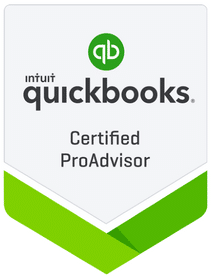- Patrick Roney
- (877) 503-8607
Follow Us :
Follow Us :
Proledge
July 1, 2010

Intuit, the maker of Quicken and QuickBooks, is an undisputed leader in software usability. They know better than anybody how to make their applications easy to learn and easy to use. So why is it that so many of us still manage to “break” QuickBooks? The reality is that accounting is complex and there is only so much that software can do to keep a user from taking a wrong step, even among the most savvy users. Since its first DOS version (remember those days?), QuickBooks made enormous strides in “dumbing things down” and it will keep on improving, but today there are still errors that are easy to make and the only way to prevent them is to learn where those pitfalls are and stay clear of them.
The most maddening part is that, once you break QuickBooks, it is very hard to fix it. That’s the downside of having a very easy application to use. It is very easy to use as long as you use it the way it is intended to be used. Once you stray off the beaten path, things can get very hard, very fast.
One such example is Sales Tax. QuickBooks has a sales tax module that allows you to see your sales tax liabilities and make adjustments. In most cases, once you pay your sales taxes, your state’s calculation won’t match exactly what you have in QuickBooks. For instance, some states may give you a small discount for paying on time. So, once you’ve paid the sales taxes, you need to make an adjustment in QuickBooks to reflect what you actually paid. Unfortunately, it is very tempting to enter this adjustment straight into a ledger. That’s a No-No. If you do this, you’ll break QuickBooks because that’s not how QuickBooks is wired and it will be very difficult to fix, mainly if you discover the problem only a few months later. For sales tax, there is no way around but to use the QuickBooks sales tax module exactly how it is designed to be used.
So, the #1 rule with QuickBooks is “Never try to trick it”. In accounting, any action on one aspect of your books has repercussions in many other parts of your books. Unless you know exactly how QuickBooks is wired, if you try to trick it, you may affect other parts of your books in completely unintended ways.
The #2 rule with QuickBooks is “Follow the on-screen instructions”. If QuickBooks asks you “Are you sure that you want to do this?”, think twice before doing it. The most common example is changing or deleting a transaction that has already been reconciled. If you do this, you’ll break the reconciliation process and that’s usually a big problem. It will typically take quite a bit of work to fix this.
Sometimes, QuickBooks can be very frustrating because it ties your hands so much. You often wish it could be nimbler. There are more flexible accounting packages out there, but they cost a fortune compared to QuickBooks. So, for most businesses, QuickBooks remains the only option and you have to walk the path that QuickBooks wants you to walk.


Fill out the form below to sign up to our Blog Newsletter and we’ll drop you a line when new articles come up.
Bookkeepers.
Professional. Affordable.
ProLedge is a bookkeeping services firm.
Copyright © 2024 All rights reserved.